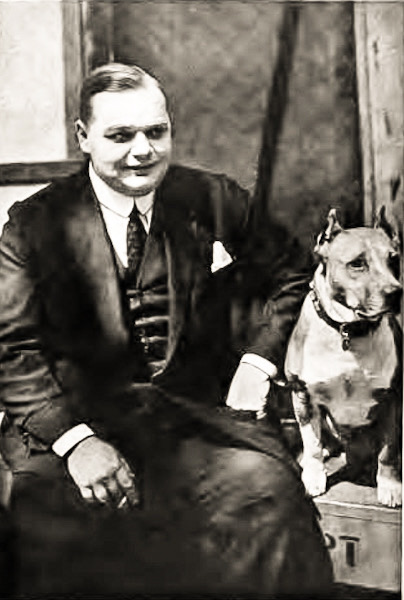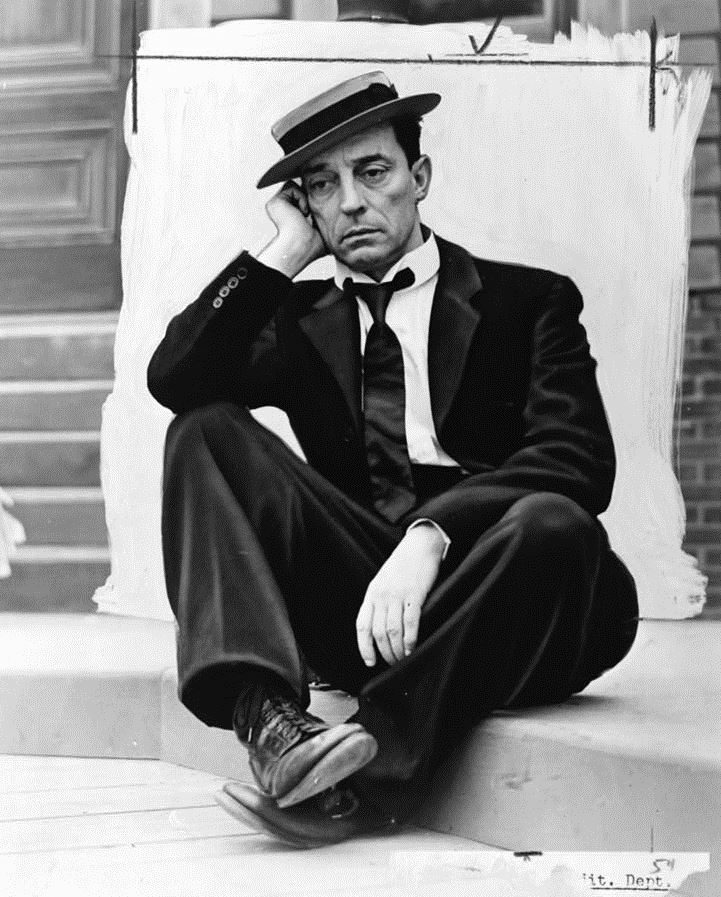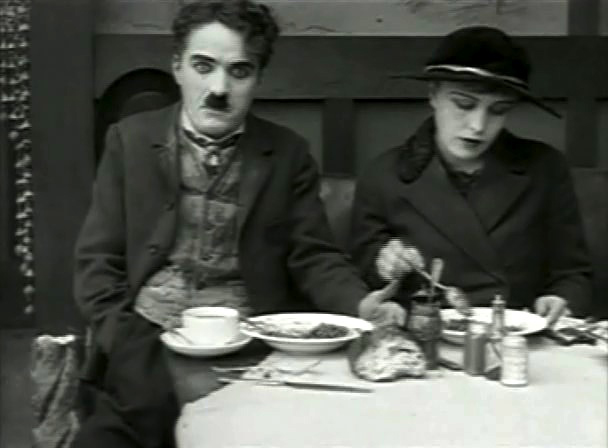|
Coney Island (1917 Film)
''Coney Island'' (also known as ''Fatty at Coney Island'') is a 1917 American two-reel silent comedy film starring, written and directed by Roscoe "Fatty" Arbuckle and featuring Buster Keaton. Synopsis Fatty has been dragged along to Coney Island by his wife who insists they spend their time together on the beach. Getting inspiration from a dog digging a hole in the sand, Fatty ditches his wife by burying himself in the sand then making a run for the amusement park as she searches for him. Fatty's wife enlists the help of an old friend (Al St. John, referred to as "Old Friend") who enters the park to look for Fatty, however once inside he notices an attractive young lady (Alice Mann, referred to as "Pretty Girl") who is there on a date with a young man (Buster Keaton, referred to as "Rival") and promptly woos her into entering the park with him rather than Rival, leaving the latter distraught. Finding he has no money, Rival gains entry to the park by hiding in a barrel and f ... [...More Info...] [...Related Items...] OR: [Wikipedia] [Google] [Baidu] |
Roscoe Arbuckle
Roscoe Conkling "Fatty" Arbuckle (; March 24, 1887 – June 29, 1933) was an American silent film actor, comedian, director, and screenwriter. He started at the Selig Polyscope Company and eventually moved to Keystone Studios, where he worked with Mabel Normand and Harold Lloyd as well as with his nephew, Al St. John. He also mentored Charlie Chaplin, Monty Banks and Bob Hope, and brought vaudeville star Buster Keaton into the movie business. Arbuckle was one of the most popular silent stars of the 1910s and one of the highest-paid actors in Hollywood, signing a contract in 1920 with Paramount Pictures for $14,000 (). Arbuckle was the defendant in three widely publicized trials between November 1921 and April 1922 for the rape and manslaughter of actress Virginia Rappe. Rappe had fallen ill at a party hosted by Arbuckle at San Francisco's St. Francis Hotel in September 1921, and died four days later. A friend of Rappe accused Arbuckle of raping and accidentally killing her ... [...More Info...] [...Related Items...] OR: [Wikipedia] [Google] [Baidu] |
Joe Bordeaux
Joe Bordeaux (March 9, 1886 – September 10, 1950) was an American film actor. He appeared in more than 70 films between 1914 and 1940. He was born in Colorado, and died in Los Angeles, California. Selected filmography * ''Mabel at the Wheel'' (1914, Short) - Dubious Character * ''The Knockout'' (1914, Short) - Policeman (uncredited) * ''The Property Man'' (1914, Short) - Old Actor * ''Mabel and Fatty's Wash Day'' (1915, Short) - Cop (uncredited) * ''Mabel and Fatty's Married Life'' (1915, Short) - Farm Hand * ''Mabel and Fatty's Simple Life'' (1915, Short) - Farm Hand * ''Fatty and Mabel at the San Diego Exposition'' (1915, Short) - Flirty Guy in Go-Cart (uncredited) * ''Mabel, Fatty and the Law'' (1915, Short) - Cop in Park (uncredited) * ''Fatty's New Role'' (1915, Short) - Cop (uncredited) * ''Fatty's Faithful Fido'' (1915, Short) - Man at the Dance (uncredited) * ''When Love Took Wings'' (1915, Short) - Fatty's Rival - the Girl's True Love * ''Wished on Mabel'' (1915 ... [...More Info...] [...Related Items...] OR: [Wikipedia] [Google] [Baidu] |
1917 Comedy Films
Events Below, the events of World War I have the "WWI" prefix. January * January 9 – WWI – Battle of Rafa: The last substantial Ottoman Army garrison on the Sinai Peninsula is captured by the Egyptian Expeditionary Force's Desert Column. * January 10 – Imperial Trans-Antarctic Expedition: Seven survivors of the Ross Sea party were rescued after being stranded for several months. * January 11 – Unknown saboteurs set off the Kingsland Explosion at Kingsland (modern-day Lyndhurst, New Jersey), one of the events leading to United States involvement in WWI. * January 16 – The Danish West Indies is sold to the United States for $25 million. * January 22 – WWI: United States President Woodrow Wilson calls for "peace without victory" in Germany. * January 25 ** WWI: British armed merchantman is sunk by mines off Lough Swilly (Ireland), with the loss of 354 of the 475 aboard. ** An anti-prostitution drive in San Francisco occurs, and polic ... [...More Info...] [...Related Items...] OR: [Wikipedia] [Google] [Baidu] |
International Buster Keaton Society
The International Buster Keaton Society Inc.— a.k.a. "The Damfinos"—is the official educational organization dedicated to comedy film producer-director-writer-actor-stuntman Buster Keaton. Mission According to the Damfinos, their mission is "to foster and perpetuate appreciation and understanding of the life, career and films of comedian/filmmaker Buster Keaton; to advocate for historical accuracy about Keaton's life and work; to encourage dissemination of information about Keaton; to endorse preservation and restoration of Keaton's films and performances; and to do all of the above with a sense of humor that includes an ongoing awareness of the surreal and absurd joy with which Keaton made his films." Statement of Purpose The International Buster Keaton Society Inc. (also known as “The Damfinos”) is a 501(c)(3) nonprofit organization dedicated to educating the world about comedian and filmmaker Buster Keaton. Activities Among other projects, the Damfinos publish a tri-ann ... [...More Info...] [...Related Items...] OR: [Wikipedia] [Google] [Baidu] |
YouTube
YouTube is a global online video platform, online video sharing and social media, social media platform headquartered in San Bruno, California. It was launched on February 14, 2005, by Steve Chen, Chad Hurley, and Jawed Karim. It is owned by Google, and is the List of most visited websites, second most visited website, after Google Search. YouTube has more than 2.5 billion monthly users who collectively watch more than one billion hours of videos each day. , videos were being uploaded at a rate of more than 500 hours of content per minute. In October 2006, YouTube was bought by Google for $1.65 billion. Google's ownership of YouTube expanded the site's business model, expanding from generating revenue from advertisements alone, to offering paid content such as movies and exclusive content produced by YouTube. It also offers YouTube Premium, a paid subscription option for watching content without ads. YouTube also approved creators to participate in Google's Google AdSens ... [...More Info...] [...Related Items...] OR: [Wikipedia] [Google] [Baidu] |
Buster Keaton Filmography
This is a list of films by the American actor, comedian, and filmmaker Buster Keaton. Short films Starring Roscoe Arbuckle, featuring Buster Keaton Starring Buster Keaton under Buster Keaton Productions Starring Buster Keaton for Educational Pictures Starring Buster Keaton for Columbia Pictures Starring Buster Keaton for independent producers Directed by (but not featuring) Buster Keaton for Metro-Goldwyn-Mayer With Buster Keaton in featured or cameo roles Feature films Starring Buster Keaton for Metro Pictures Starring Buster Keaton under Buster Keaton Productions Starring Buster Keaton for Metro-Goldwyn-Mayer Starring Buster Keaton for independent producers With Buster Keaton in featured or cameo roles Television appearances (incomplete) * ''The Ed Wynn Show'', (1949) as Buster * ''The Buster Keaton Show'', KKTV (1950) as Buster * ''Life with Buster Keaton'', KKTV (1951) as Buster * ''Douglas Fairbanks Presents' ... [...More Info...] [...Related Items...] OR: [Wikipedia] [Google] [Baidu] |
Fatty Arbuckle Filmography
__NOTOC__ These are the films of the American silent film actor, comedian, director, and screenwriter Roscoe Arbuckle. Films marked with a diamond (♦) were directed by and featured Arbuckle. He used the name William Goodrich on the films he directed from 1924 onward. Arbuckle's films share the common fate of silent movies. Of the hundreds of features and shorts in which he appeared between 1909 and 1933, only about half are known to have survived, and many exist only in fragmentary form. Further, there is no single source from which the remaining Arbuckle library can be accessed. Surviving prints, negatives, stills and other materials are scattered around the globe, held by various corporations, government institutions, museums and private collectors. ---- As an actor: Early years - 1913 - 1914 - 1915 - 1916 - 1917 - 1918 - 1919 - 1920 - 1921 - Later years ---- As a director: 1910s - 1922 - 1924 - 1925 - 1926 - 1927 - 1930 - 1931 - 1932 - References ---- As an act ... [...More Info...] [...Related Items...] OR: [Wikipedia] [Google] [Baidu] |
List Of American Films Of 1917
This list of American films of 1917 is a compilation of American films released in 1917. A–B C–D E–F G–H I–J K–L M–N O–P Q–R S T U–V W–Z Short films See also * 1917 in the United States References External links 1917 filmsat the Internet Movie Database {{DEFAULTSORT:American films of 1917 1917 Films A film also called a movie, motion picture, moving picture, picture, photoplay or (slang) flick is a work of visual art that simulates experiences and otherwise communicates ideas, stories, perceptions, feelings, beauty, or atmosphere ... Lists of 1917 films by country or language 1910s in American cinema ... [...More Info...] [...Related Items...] OR: [Wikipedia] [Google] [Baidu] |
Film Censorship In The United States
Film censorship in the United States was a frequent feature of the industry almost from the beginning of the U.S. motion picture industry until the end of strong self-regulation in 1966. Court rulings in the 1950s and 1960s severely constrained government censorship, though statewide regulation lasted until at least the 1980s. State and local censorship, from pre-code to post-code Complaints from government authorities about film content date back at least as far as what was probably the first appearance of a woman in a motion picture in the United States, resulting in local self-censorship of the 1894 silent film ''Carmencita''. Laws authorizing censorship of film in the United States began with an 1897 Maine statute prohibiting the exhibition of prizefight films; the state enacted the statute to prevent the exhibition of the 1897 heavyweight championship between James J. Corbett and Bob Fitzsimmons. Other states followed Maine's example. Chicago enacted the first censorship ... [...More Info...] [...Related Items...] OR: [Wikipedia] [Google] [Baidu] |
Fourth Wall
The fourth wall is a performance convention in which an invisible, imaginary wall separates actors from the audience. While the audience can see through this ''wall'', the convention assumes the actors act as if they cannot. From the 16th century onward, the rise of illusionism in staging practices, which culminated in the realism and naturalism of the theatre of the 19th century, led to the development of the fourth wall concept. The metaphor suggests a relationship to the mise-en-scène behind a proscenium arch. When a scene is set indoors and three of the walls of its room are presented onstage, in what is known as a box set, the fourth of them would run along the line (technically called the proscenium) dividing the room from the auditorium. The ''fourth wall'', though, is a theatrical convention, rather than of set design. The actors ignore the audience, focus their attention exclusively on the dramatic world, and remain absorbed in its fiction, in a state that ... [...More Info...] [...Related Items...] OR: [Wikipedia] [Google] [Baidu] |
Persona
A persona (plural personae or personas), depending on the context, is the public image of one's personality, the social role that one adopts, or simply a fictional Character (arts), character. The word derives from Latin, where it originally referred to a theatrical mask. On the social web, users develop virtual personas as online identity, online identities. Etymology The Latin word probably derived from the Etruscan language, Etruscan word "", with the same meaning, and that from the Greek ('). Its meaning in the latter Roman period changed to indicate a "character" of a theatrical performance or court of law, when it became apparent that different individuals could assume the same role and that legal attributes such as rights, powers, and duties followed the role. The same individuals as actors could play different roles, each with its own legal attributes, sometimes even in the same court appearance. According to other sources, which also admit that the origin of the ter ... [...More Info...] [...Related Items...] OR: [Wikipedia] [Google] [Baidu] |
Shoot-the-Chutes
Shoot the Chute is an amusement ride consisting of a flat-bottomed boat that slides down a ramp or inside a flume into a lagoon. Unlike a log flume or super flume, which generally seats up to eight passengers, a modern-day Shoot the Chute ride generally has larger boats seating at least four across. History The first of this type of amusement ride was built by J.P. Newburg in 1884 down the side of a hill at Watchtower Park in Rock Island, Illinois. The ride traveled along a greased wooden track, skipping across the Rock River at the bottom. It was then pulled back to the ramp by an onboard ride attendant. Newburg took this unique ride concept next to Chicago, where more flumes were built and the rides grew in popularity. Paul Boyton opened Paul Boyton's Water Chute, America's first modern amusement park, at 63rd and Drexel in Chicago, Illinois, on July 4, 1894. Boyton's was the first amusement park to rely solely on mechanical attractions. Paul Boyton and Thomas Polk built an ... [...More Info...] [...Related Items...] OR: [Wikipedia] [Google] [Baidu] |





_-_Barbara_Castleton.jpg)

